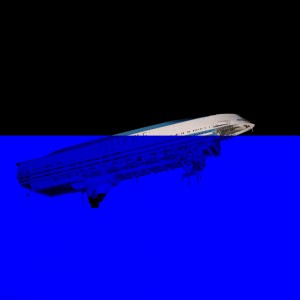Ferry Estonia: the drowned truth
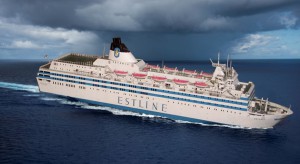
On the night of 28-29 September 1994, a ferry of the EstLine Marine Company, known as Estonia, passes through the Baltic Sea near the island of Utö. It is stormy, the waves are high and the journey is anything but calm. For Captain Andersson, with 20 years of experience, it is routine. The Estonia is well equipped to sail in such waters. There are stabilisers in her hull, which, when deployed, give the vessel a better balance even in rough seas, making the journey calmer for the 989 or so passengers.
It is 0:50 hours on 29 September 1994. The ship is travelling at 14 knots (26 km/h) towards Sweden. The storm at that moment reaches a level that most of the passengers awake inside Estonia feel.
"It's like the Titanic. They're about to serve free champagne," Kent Harstedt recalls.
In the storage area, car alarms are going off because of the storm. But these sounds are drowned out by others. As some of the survivors will later testify, three massive bangs shake the ship.
The Estonia's bow tears away from the rest of the ship and falls away. The airtight doors are damaged, and water begins to pour uncontrollably into the hold.
That's when the evacuation is supposed to begin, but no one announces it. Panic breaks out only at 1:02 a.m., when the accumulated water makes the ship unstable, and it very quickly lays on its starboard side. Gradually, the starboard walls become the floor, the port walls the ceiling. What was below is left, and what was above is right.
The captain, not knowing what's happening, orders a sharp tack to bring the ship back on line. But this only makes the situation worse.
Survival from that point on depends on where you are at that moment. Starboard cabins mean certain death. So do the transverse corridors, which are a trap that traps passengers below and then becomes a pathway for seawater to flood the rest of the vessel's interior.
Launching the lifeboats was out of the question, because when they could be launched, evacuation was not taking place, and once people were fleeing, launching them was almost impossible because of the considerable list.
About one in four managed to get out of the interior of the ship. At that time, the crew on the captain's bridge radioed "Mayday".
About half of those who manage to get off the ship then find a lifeboat, and evacuate the ferry on their own initiative.
By this time, the ship is already losing power, which makes the situation even worse. We have a surviving recording from this moment which shows how difficult it was for the surrounding ships to maintain contact with the Estonia. And the chaos in the radio transmissions.
Around 1:45 a.m., just under an hour after the ship lost its bow, the starboard side of the captain's bridge begins to sink into the rough sea. The Estonia makes three long blasts. A final farewell signal for everyone to leave the sinking wreck immediately.
The ferry loses buoyancy and the stern finally sinks beneath the surface. The bow rises with the hull above the surface. The lights flash several times, then go out forever.
The passengers inside the ship are left in total darkness. Because of the list, they don't know where to go, where they'll fall into cabins or corridors that mean certain death, or if they'll be hit by furniture or the ship's inventory a short distance away, which loosens and falls over with the increasing list.
Screaming, crying, the sound of falling objects, the roar of water and the groaning of the hull. These are the conditions in which the vast majority of passengers die.
At 1:48 a.m., the Estonia finally disappears from the radar screen of the Finnish military base on Utö Island.
The survivors are floating in water that is about ten degrees Celsius. For more than an hour they fight for their lives. It is not until around 3am that a rescue helicopter appears in the sky. Eight minutes later, the first of the rescue boats arrives: Mariella.
Of the 989 passengers and crew, only 137 survive the Estonia tragedy. 86% of the passengers and staff perish. Percentage-wise, this is an even worse disaster than the Titanic - where death befell "only" 68% of the people.
INVESTIGATION AND OFFICIAL CONCLUSIONS
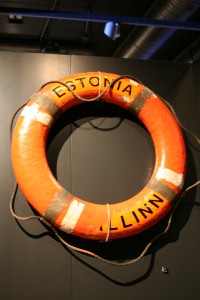
Immediately after the tragedy, an official investigation into the whole incident is underway. Divers retrieve the bow of the ship along with other evidence from the bottom of the sea.
After years of investigation and evaluation, the commission publishes its final report, blaming Finland, Sweden and Estonia, plus the Estonian crew, for the sinking of the Estonia. Finland for the poor quality of the ship's bow and the highest quality certificate awarded. Sweden and Estonia for the poor quality of maintenance and the Estonian crew for the poorly organised evacuation.
But soon after the report was published, there was a wave of disapproval from independent experts. They first say, and later prove, that the Estonia's bow was not undersized, but oversized, and that the storm could not have torn the bow off that night.
Meanwhile, Sweden is issuing a law saying that the Estonia is an underwater grave and as such it is forbidden to retrieve anything from it. Even diving to the wreck itself is not something the Swedes like to see.
German journalist Jutta Rabe and American adventurer Gregg Bremis are trying to get to the bottom of it all on their own with their team. Six years after the Estonia disaster, a new independent expedition sets sail for the sinking site with Czech divers on board. One of them is Jindřich Böhm, who still talks about the tragedy and his dives.
NEW INVESTIGATIONS AND MYSTERIES SURROUNDING THE CASE
There are many mysteries surrounding the sinking of the Estonia. On the fateful night, the truck driver, who was staying with his car, said that after three explosion-like shots, he saw a stream of water coming up not from the bow but from the floor, flooding the bottom of the ship. This would have meant damage to the side of the Estonia, something that, according to official conclusions, would have been unthinkable.
As the divers dive towards the wreck of the Estonia after a series of complications, they land on a sandbank, which is actually a kind of concrete dome partially covering the side of the wreck. When investigators recovered the ship's bow on the third day after the tragedy, they decided that the entire wreck would be concreted over like a grave. Work began the next day. But the survivors disagreed, and the project was abandoned due to a wave of lawsuits. All that remains is this relic as evidence of the effort to bury the wreck before further investigation.
Coincidentally, this embankment was built at the point where, according to an eyewitness, the hole through which the water entered Estonia was supposed to be.
The divers were thus unable to attend to this part of the wreck, and all they found was that the ship's stabilisers, which should have been extended in the storm, were retracted. All around the ferry were the torsos of human bodies covered with sediment. Even six years after the disaster, it was still possible to tell who was male and who was female.
The bow of the wreck was not encased in concrete. And that's where an important clue is found: holes in the hull about a metre long. The steel around the edges of these holes is bent outwards, as if the hull had been punctured by a pressure wave from inside the ship. The divers therefore cut off several pieces and pulled them secretly aboard the research vessel. If the Swedish or Finnish side, which had patrol boats in the area, had learned of this action, it would have been a good reason to intervene and arrest all those involved.
Even so, the whole team did not have a quiet job. Within a week, the satellite phones of the two leaders of the expedition stopped working. In addition, the Finns and Swedes pulled out a guide rope that helped the divers locate the dive site and thus the wreck. The jamming of the instruments culminated in the ship's radar being disrupted, making it impossible to re-locate the wreck. The expedition had to re-find the wreck with a simple magnet on the rope.
The dives to Estonia were very difficult. The wreck is at a depth of about 85 metres. The water is only nine degrees at the bottom and visibility is minimal. Divers are allowed to work on it for about twenty minutes, and then it takes another two and a half hours to surface.
The recovered parts of the fuselage around the aforementioned holes on the bow were then sent to several countries for expertise. The result? All but one independently confirmed that the steel showed signs of damage from the explosion, which came from inside the ship (the experts even clearly communicated the distance from the centre of the blast), and that the pressure wave could have not only ripped out the bow locks but also damaged the forward airtight doors. This meant that the recovered piece of the Estonia's bow must also have borne clear signs of the explosion. The findings were therefore passed on to the lawyer representing the survivors of the tragedy. He did indeed manage to negotiate permission and take a look at the Estonia's bow. The discovery is all the more shocking when the said site that was to be hit by the explosion has been professionally cut out and removed. Evidence of a possible explosion is thus irretrievably lost and the staff at the site shrug helplessly, not knowing who removed the piece of steel mentioned on the wreck. It's as if the hole cut itself.
Human memory in general is a very interesting element in the whole Estonia case. The crew members who were on the lower deck at the time the bow was torn off, mostly survived. And their testimonies are a pearl next to a pearl.
Fire Commissioner Linde, in his first version of his testimony, said that he experienced a strong impact like an explosion at 1:02 am. He then promptly moved to the information desk, where he was dispatched by telephone to check the flooding of deck 1.
When Linde testifies a second time, his account of the event is no longer consistent with the official board of inquiry. He changed the times and the people he met, and went from the information desk not to Deck 1 but back to the garage to find out what the strange noises in the hull were.
Right on deck 1, however, was where Third Officer Treu was supposed to be. His testimony is very strange. According to the reports, the ship was listing hard to starboard at 1:02 a.m. Yes, that was the moment that caused widespread panic. But Treu didn't notice the list at all. He was on this deck trying to start the engines. That didn't work, so he went to check out the spare diesel generator. But the watertight bulkheads were closed at the time, and there was no stairway from Deck 1 to the engine room (Deck 0). So how he got to this place is as mysterious as the fact that he then had to climb seven floors of the ship, which at that moment was listing at 70-90 degrees. He should have saved himself by jumping into the water from the deck of the sinking ferry.
The other person in the hold was supposed to be Henrik Sillaste, who was repairing the defective toilet at the critical time. According to his testimony, he reached Deck 8 via two closed watertight doors, a stairway and one ladder in just one minute on a deck that had an 80-degree inclination.
The very fact that so many crew members survived who were in the very bottom of the ship at the incriminating time is very interesting. Moreover, everyone in the engine room was rescued. And these testimonies are grist for the mill of those who question the official conclusions of the investigation.
Other people who had something to say about the tragedy and its facts have mysteriously begun to disappear.
Most of the crew around the second captain, Avo Pihta, survived the disaster and were taken to hospital. A nurse from Turku mentions him directly to the camera as a survivor (afterwards the Estonian Prime Minister Mart is to meet him). The families are informed that they survived and that they will be coming home soon. Yet 12 people never arrived home (including the second captain and chief engineer) and five days after the tragedy they are treated as missing and lost at sea.
When the first divers of the Swedish Navy, led by Gustav Hanuljak, make the first dives to the wreck, they report a large tear on the starboard side of the ship, five meters long (30 meters from the bow), two meters below the waterline. This would explain both the flow of water from off the bow and the fact that after capsizing to starboard the Estonia sank below the surface aft and did not remain floating like a cork when capsized.
So when the divers then fish out those forward locks of the ship that are supposed to be responsible for the tragedy, the investigators immediately throw them overboard as useless scrap, saying they are too big and have no valid value.
Another interesting fact is the problems within the official commission itself. Several members resign during the investigation. Others die mysteriously (for example: Börje Stenström). The psychologist Bengt Schager, who edited the interrogation protocols, resigned in 1997 on the grounds that he did not believe in the moral integrity of the commission and publicly stated that the whole investigation was rigged.
Witnesses who did not give the testimony that the official commission needed were threatened - whether by Russia, the USA, Sweden or other interested countries. Heinrich Böhm himself, who dived to the wreck of the Estonia, was later a direct participant in these proceedings through a fax message that allegedly came from a workplace in the Swedish Ministry of Transport. As a result of diving to the wreck of the Estonia, he was banned from entering Sweden and a criminal prosecution was issued against him.
The biggest blow to the official report came from the allegations of the former head of the Stockholm Customs Administration (supposedly to ease his conscience), Lennart Henriksson, who admitted that he had repeatedly allowed Russian military equipment loaded on trucks onto the Estonia ferry, which was then transported to the US in a complicated manner. So apparently a kind of black market in arms.
Officials eventually admitted the transfer of the military material, but said it could not have caused the sinking of the ship, as it was not of an explosive nature - it was electronics. However, they are not allowed to release details until 70 years after the disaster due to classified information.
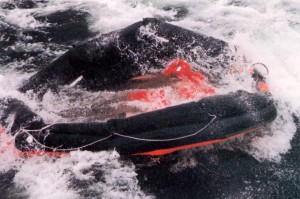
AS IT MIGHT HAVE BEEN
There are so many uncertainties surrounding the Estonia case that they give us a different picture of the course of the tragedy itself. If we try to piece together all the evidence we have gathered, we are left with a few possible variations that could have taken place on the fateful night of 29 September 1994.
If Estonia was repeatedly transporting military material, it was clear that sooner or later other parties would become aware of this and would want to disrupt the trade.
That this may have been the case is suggested by the fact that repeated drills were carried out on board the Estonia during the last few months of her life to evacuate passengers and crew members after an explosion inside the ship. The last such rehearsal took place about a day before the Estonia embarked on her final voyage. Ironically, all the crew members who were present at this training exercise perished in the tragedy.
So was there any information that the Estonia was in danger? If so, it was never made public.
Thus, on the night in question, munitions may have exploded in international waters to disrupt the supply of weapons to the US. It damaged the locks, the watertight doors and the hull. Those on the zero deck (engine room) were either informed of the event or at least the first to know of the consequences of the explosion for the ship and were the first to make their escape, giving them ample time to leave the deck in their boats as none of them even froze to death in the water.
The pouring of concrete over the ship itself may then indicate either an attempt to cover the tracks leading to the perpetrator or the preservation of some potentially dangerous material that may have been carried on the ship. Indeed, at no time in history has a ship ever been purposefully doused with concrete when, moreover, dozens of human remains are lying with the debris in the wide vicinity of the ship, which could have been recovered and buried as early as 1994. Unfortunately, for some reason, this never happened either.
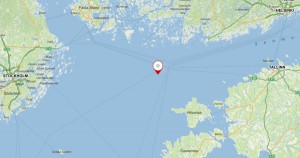
CONCLUSION
Almost a quarter of a century has passed since the sinking of the Estonia ferry. Much has changed since then. The world has faced new challenges, tragedies and risks. Estonia and the question marks surrounding it have long since been out of focus. They have lost their relevance. And that is a pity, because 852 people lost their lives for a reason. And it would be good to name that reason precisely, because the culprits may still be out there. Whether in high professional positions or retired, no one has ever held them to account.
And if such a tragedy could have happened in 1994, it could certainly happen again one day. With the same course, conclusions and horrors that ended not only with the sinking of the ship, but also with everything around it that set this crime in motion.
Author's thanks to Henry Böhm for his interesting and engaging account of his dive to the wreck of the Estonia in 2000.
Author of article: Ondřej Bezouška



